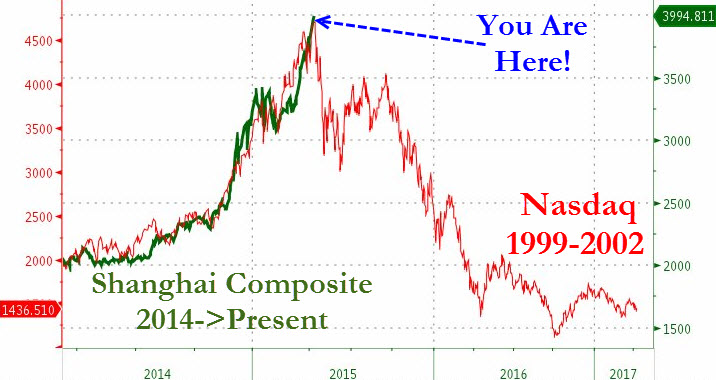U.S. tech giants could indicate an end to the approximately year-long slowdown in their cloud businesses as recent signs of economic resilience encourage consumers to boost their tech spending. Also, a surge in digital ads would drive profits.
Wall Street’s leading tech companies, Google-parent Alphabet Inc. (GOOGL), Meta Platforms (META), and Microsoft Corporation (MSFT), are scheduled to report earnings this week, which will be a test to their elevated valuations and the broader market rally these tech giants have driven, thanks to optimism over artificial intelligence’s (AI) growth potential.
The Overall Consensus Estimates of Each Stock.
Analysts expect GOOGL’s revenue for the second quarter (ended June 2023) to come in at $72.80 billion, indicating an increase of 4.5% year-over-year. The consensus EPS estimate of $1.34 for the to-be-reported quarter reflects a 10.7% year-over-year improvement.
Furthermore, analysts expect GOOGL’s revenue and EPS for the fiscal year (ending December 2023) to increase 6.2% and 16.9% from the previous year to $300.31 billion and $5.33, respectively.
In the case of META, analysts expect revenue to increase 8% year-over-year to $31.12 billion for the second quarter that ended June 2023. The tech company’s EPS for the to-be-reported quarter is expected to rise 18.3% year-over-year to $2.91.
Additionally, META’s revenue and EPS for the fiscal year (ending December 2023) are expected to grow 8.9% and 37.5% year-over-year to $126.96 billion and $11.81, respectively.
For the fourth quarter that ended June 2023, analysts expect MSFT’s revenue to increase 7% year-over-year to $55.47 billion. The company’s EPS for the same quarter is expected to rise 14.4% year-over-year to $2.55. Moreover, it has topped the consensus EPS estimates in three of the trailing four quarters, which is impressive.
For the fiscal year 2023, the consensus revenue and EPS estimates of $211.34 billion and $9.67 indicate increases of 6.6% and 5% year-over-year, respectively. In addition, the company’s revenue and EPS for the next fiscal year 2024 are expected to grow 11.7% and 14.1% from the prior year to $236.10 billion and $11.03, respectively.
How Should Investors Approach These Stocks?
While the search engine is GOOGL’s flagship product, the company operates in key areas such as hardware, cloud computing, advertising, and software.
The tech giant, scheduled to report second-quarter 2023 results on July 25, surpassed analysts’ earnings estimates in the first quarter. GOOGL’s revenue of $69.78 billion beat analyst expectations of $68.90 billion, according to Refinitiv. Also, the company reported earnings of $1.17 per share versus $1.07 per share expected, according to Refinitiv.
In addition, GOOGL’s YouTube advertising revenue was $6.69 billion, compared to $6.60 billion expected, according to StreetAccount. The beat on the top and bottom lines breaks a string of four consecutive quarters in which the company missed the consensus estimates.
The company finally generated profit in its cloud-computing business during the first quarter. Its Google Cloud revenue grew 28.1% from the year-ago value to $7.45 billion. The unit reported an operating income of $191 million, following a $706 million loss in the same quarter of 2022.
“We are pleased with our business performance in the first quarter, with Search performing well and momentum in Cloud. We introduced important product updates anchored in deep computer science and AI. Our North Star is providing the most helpful answers for our users, and we see huge opportunities ahead, continuing our long track record of innovation,” commented Sundar Pichai, GOOGL’s CEO.
Due to intense pressure from the popularity of the AI-based chatbot ChatGPT, launched in November last year by Microsoft-backed Open AI, GOOGL launched its own AI chatbot called Bard during the first quarter of 2023.
GOOGL is making numerous efforts to incorporate “generative AI” into its products. On June 8, the company introduced the Secure AI Framework (SAIF), a conceptual framework for secure AI systems. SAIF is designed to help mitigate risks specific to AI systems, such as stealing the model, data positioning of training data, extracting confidential information in the training data, and injecting malicious inputs.
On May 25, GOOGL announced Search Labs, a new generative AI-powered program that enables users to access early experiments like SGE, Code Tips, and Add to Sheets. In the same month, the company unveiled the private preview of Duet AI for Google Cloud, an always-on AI collaborator to provide help to developers.
Furthermore, on May 18, GOOGL unveiled the private preview of Duet AI for Google Cloud, an always-on AI collaborator powered by generative AI. It offers real-time code suggestions, chat assistance, and customizable features designed for enterprise requirements.
Alphabet’s second-quarter results are expected to reflect profits from its strengthening cloud service offerings. The company’s growing investments in infrastructure, data management, analytics, security, and AI are the primary catalysts. While the Google Cloud segment would turn into a profit in the second quarter, the growth could slow down.
According to analysts polled by Refinitiv, GOOGL will likely report its lowest-ever growth for the cloud computing business at 24.4%. On the other hand, the recovery in the digital ad market would aid GOOGL significantly.
META is another tech giant set to report second-quarter earnings on July 26 after market close. With a $754.11 billion market cap, Meta, formerly known as Facebook, Inc., develops innovative products that allow people to connect and share with friends and family through mobile phones, PCs, virtual reality (VR) headsets, and wearables globally.
Meta’s products and services include Facebook, Instagram, WhatsApp, Messenger, and Quest 2.
Tech conglomerate reported better-than-expected revenue and earnings for the first quarter of 2023. META’s sales increased by 3% year-over-year during the first quarter, reversing a trend of three consecutive quarters of revenue declines and topping analysts’ estimates of $27.65 billion, according to Refinitiv.
Also, the tech company reported earnings of $2.20 per share, compared to the $2.03 per share expected by analysts, according to Refinitiv.
In addition, META’s user growth was relatively strong compared to previous quarters. META’s family daily active people (DAP) were 3.02 billion on average, up 5% year-over-year. Similarly, its family monthly active people (MAP) rose 5% from the prior-year quarter to 3.81 billion. Also, Facebook’s daily active users (DAUs) were 2.04 billion as of March 31, 2023, up 4% year-over-year.
In the last quarterly release, Meta’s founder and CEO, Mark Zuckerberg, commented, “Our AI work is driving good results across our apps and business. We’re also becoming more efficient so we can build better products faster and put ourselves in a stronger position to deliver our long-term vision.”
Further, the company stands to benefit from its upcoming product launches, including Meta Quest 3, a cutting-edge virtual and mixed reality headset featuring higher resolution, improved performance, breakthrough Meta Reality technology, and enhanced comfort.
Also, on July 18, META introduced the availability of Llama 2, an open-source large language model, with Microsoft as its preferred partner. The companies believe that an open approach is the right one for developing today’s AI models, especially those in the generative space where the technology is advancing rapidly.
This month, Facebook owner Meta announced Threads, an app built by the Instagram team for sharing via text. Threads provide a new, separate space for real-time updates and public conversations. Creators and influencers are increasingly exploring this new app to bolster their online presence and help them reach bigger audiences.
Threads became the fastest-growing social media platform to hit 100 million users, a serious threat to the dominant microblogging Twitter app. This resulted in several analysts upgrading the META stock. If the application manages to retain users, Threads could achieve $5 billion in annual ad revenue, Bernstein said in a note on July 18.
On July 11, Morningstar analysts stated that Threads could add between $2 billion and $3 billion to META’s revenue annually between 2024 and 2024.
As a result of continued technological breakthroughs and innovative product launches, META issued a relatively bullish forecast for the second quarter of fiscal 2023, projecting total revenue of between $29.50 billion and $32 billion, exceeding analysts’ sales estimate of $29.50 billion, according to Refinitiv.
For META, revenue in the fiscal 2023 second quarter is projected to grow at its fastest pace in six quarters, driven by a significant pickup in the digital ad market as consumer spending remains robust.
Along with GOOGL, leading tech company MSFT is set to release its fourth-quarter and fiscal year 2023 earnings report on July 25. The company reported better-than-expected results for the first quarter of fiscal 2023.
During the third quarter, MSFT beat Wall Street’s revenue and earnings estimates, driven by growth in its cloud computing and Office productivity software businesses, and the software giant added that AI products were stimulating its sales.
MSFT’s revenue in the third quarter increased 7% year-over-year to $52.90 billion, surpassing analyst expectations of $51.02 billion, according to data from Refinitiv. The company reported earnings of $2.45 per share, beating analyst estimates of $2.23, according to Refinitiv.
During the quarter, the company’s growth at its cloud business Azure was 27%, exceeding analyst expectations for 26.6% growth, according to the consensus of 23 analysts polled by Visible Alpha.
Microsoft’s CEO, Satya Nadella, told investors on a conference call that the company will continue to focus on three priorities. First is assisting customers in using the depth of the Microsoft Cloud to get the most value out of their digital spend; second, investing to take the lead in the new AI wave across its solution areas. And third is driving operating leverage, aligning its cost structure with its revenue growth.
Satya Nadella added that the company has the most powerful AI infrastructure, which is being used by its partner Open AI and NVIDIA Corporation (NVDA), and other leading AI startups, including Adept and Inflection, to train large models. MSFT’s Azure OpenAI bright together advanced models like ChatGPT and GPT-4 with the enterprise capabilities of Azure.
The company has more than 2,500 Azure-Open AI service customers, and AI is integrated into a wide range of products, MSFT’s CEO said.
On July 18, MSFT announced that the company’s new corporate AI tools that work with Office software, Microsoft 365 Copilot, would cost $30 per user per month in addition to what most business customers already pay.
The pricing, announced at MSFT’s partners’ conference, reflects solid demand for corporate AI products and the cost of running them. According to Chief Financial Officer Amy Hood, its new AI products might become the tech company’s fastest business to hit $10 billion.
While the company will likely surpass analysts’ earnings estimates in the to-be-reported fourth quarter, as it did in the first three quarters of 2023, however, Microsoft Intelligent Cloud, home to Azure, is estimated to grow at 13.7%, the slowest rate since 2017. Enterprises are optimizing their IT spending due to lingering macro challenges, thus impacting Azure and other cloud providers.
Meanwhile, last Friday, Goldman Sachs analyst Kash Rangan reiterated a Buy rating on MSFT and increased the price target to $400 from $350 after the company announced pricing and other details related to its Microsoft 265 Copilot offering.
Bottom Line
These tech giants have been at the forefront of cutting-edge research and developments in AI, Cloud, among others, integrating these powerful technologies into their products and services. With these companies flexing their muscles in Cloud and AI, they are well-posied for significant long-term growth.




